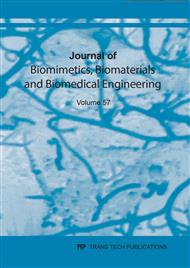p.9
p.17
p.27
p.37
p.47
p.57
p.65
p.77
p.89
Development of a Novel Thermal Mannequin System for Thermal Comfort Measurements
Abstract:
Giving comfort to the wearer without feeling physiologically and psychologically by the wearer, assuming the role of thermoregulation system against environmental temperature changes, and making them psychologically happy with their appearance and attitude characteristics makes it easier to adapt to the environment in which they live. Since all these functions of garments are generally defined as ‘clothing comfort' and aim to increase the living standards of people, the studies carried out to measure clothing comfort in the most realistic way are of great importance both academically and sectorial. In this study, it is planned to carry out the thermal mannequin system that can act to objectively evaluate together with the important parameters of thermal, humidity and pressure comfort, which are the most important criteria in determining the clothing choice of consumers, that can provide measurement in different ambient conditions, and that allows instantaneous measurements of temperature, humidity and pressure. Within this plan, a practical mannequin system has been designed for thermal, humidity and pressure comfort measurements and will allow measuring and evaluating many features at the same time. The thermal mannequin system will be produced with practical and reconfigurable 3D printing technology, which allows re-production, unlike the thermal mannequin mechanisms in the literature.
Info:
Periodical:
Pages:
89-96
Citation:
Online since:
July 2022
Authors:
Keywords:
Price:
Сopyright:
© 2022 Trans Tech Publications Ltd. All Rights Reserved
Share:
Citation:



